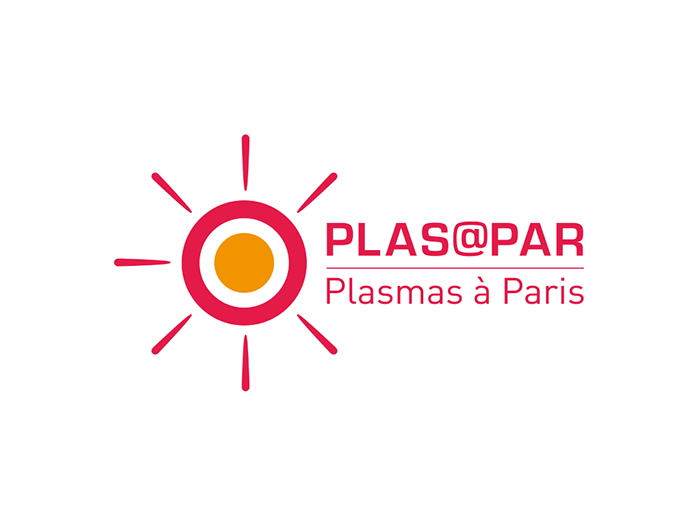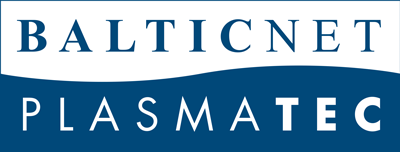LABEX PLAS@PAR
Address
Université Pierre et Marie Curie
LERMA Tower 24-34
4 Place Jussieu
75005 Paris
France
Contact
Phone: +33 1442 7760 5
Website

ABOUT SORBONNE UNIVERSITIES
Sorbonne University is one of the most comprehensive university centers in France with expertise in fields ranging from humanities to science, medicine, technology, business and economics.
ABOUT PLAS@PAR
Created in 2012, PLAS@PAR is a Cluster of Excellence (Labex) driven by Sorbonne University, awarded since 2011 in the frame of the Investment for the Future programmes (PIA) of the Agence Nationale de la Recherche.
PLAS@PAR federates 150 researchers in the Paris region from 11 laboratories and 9 research institutions, including ONERA (the French aerospace research agency), working in complementary fields such as astrophysics, fundamental plasma physics, physico-chemistry, applied mathematics, engineering and industrial applications.
Our competences in the field of cold plasmas comprise space propulsion, with two types of thrusters (LPP and ONERA), which might be applied to space missions and microsatellites, plasma assisted combustion (LPP), plasma etching (LPP), plasma surface interaction including catalysis (LPP, IJLRA), plasma air cleaning (LPP) and interaction of plasma with biological tissues with application to cancer treatment (LPP).
RESEARCH IN PLASMA SCIENCE AND TECHNOLOGY
3 main work-packages have been set:
- WP1: Fundamental processes in plasmas
- WP2: Developing the numerical factory
- WP3: Innovative experiments and observations
EDUCATION
PLAS@PAR set a package of actions to improve the dissemination of plasma science and attract more students from the Île-de-France region as well as from foreign countries, with:
- An international annual summer school
- Active support to handwork
- A training to help teachers to talk about Plasmas to their school audience (Middle & High school)
- International Internship funding for selected French students
- One-year scholarships for international students (Master 2)
- International Double Master: Europlasmi curriculum, Physics of Fusion and Plasmas with the University of Pisa, Italy
- Workshops
INDUSTRIAL APPLICATIONS
Aeronautical Engineering Industry
Electric Thrusters (ONERA – D. Packan, LPP – P. Chabert),
All-electric satellite propulsion offers disruptive new capabilities in terms of mission payload and lifetime. New concepts of electric thrusters are currently developed at PLAS@PAR, while advanced simulations and diagnostics are used to expand the capabilities of existing technologies.
More details here & here
Interaction of lighnting with aircrafts (ONERA – L. Chemartin, C. Zaepffel)
Lightning safety plays a key role for the acceptance of new composite materials required to improve the reliability and fuel-efficiency of the newest airframes. Advanced numerical tools are developed and benchmarked using dedicated high-current testing facilities to improve the development and certifications cycles of these new materials. In parallel, new detectors are also developed to improve our understanding of the threat.
Plasma assisted combustion and flow control (LPP – S. Starikovskaia, ONERA – PQ. Elias)
Non-equilibrium or thermal plasmas offers new ways to improve or control combustion or aerodynamics processes. Several methods are investigated in the Labex to improve combustion processes or its initiation, and to manipulate airflows with new plasma based actuators.
Electronic Industry
Microwave plasmas, etching (LPP – J.P Booth)
Plasma etching is investigated for microelectronic device manufacture, especially fluorocarbon plasmas for dielectric etch applications. Novel diagnostic techniques are developped for reactive plasmas: optical techniques for measuring reactive species densities and kinetics, electric fields, and electrical plasma measurements. In the meantime, sensors are developed for in-situ control of industrial plasma processes.
Environment Engineering/Waste Air Purification (LPP, ONERA)
Air cleaning (LPP – A. Rousseau)
Indoor air pollution presents an increasing domestic environmental concern in developed countries where people spend most of their time indoors, where air is often more polluted than outdoor. Plasma devices are developed to sterilize room air and eliminate harmful substances (air viruses, bacteria, spores, pollen, dusts, VOCs, …)
Surface/Water decontamination (ONERA – J. Jarrige, C . Zaepffel)
More and more industrial or medical processes require to reduce or eliminate the surface or water contamination by pathogens. Non-equilibrium plasma jets or pulsed electric field are showing very promising results for water or surfaces decontamination.
Environment Engineering/Waste to Energy
Green chemistry: CO2 dissociation by plasma (LPP – O. Guaitella, IJLRA – Da costa, Elena Galvez)
CO2 recycling is a major environmental, economical and societal priority. Since the splitting of the CO2 molecule is a strong endothermic process, low temperature plasmas are investigated to excite these molecules very efficiently with high vibrational levels. An efficient coupling of highly vibrationally excited molecular plasmas with a catalyst surface appear as a promising approach for a higher CO2 conversion.
Medical Industry
Medicine: plasmas for the treatment of specific cancers (LPP – T. Dufour)
Plasma medicine is an emerging discipline that combines plasma science, life sciences and clinical medicine. It studies the action of cold plasmas on biological systems and seeks to develop innovative therapies for many applications: blood coagulation, wound healing, dentistry, oncology, cosmetic surgery, infectious and inflammatory diseases, etc. Plasma sources are innovated to answer these issues.
PLAS@PAR organizes Industry Days each year in Paris to stimulate transfer and educate young researchers, post-doctoral fellows, doctoral and master students about research in the industrial sector and about the entrepreneurial process. Industry Days are a place of networking with industrial partners.


